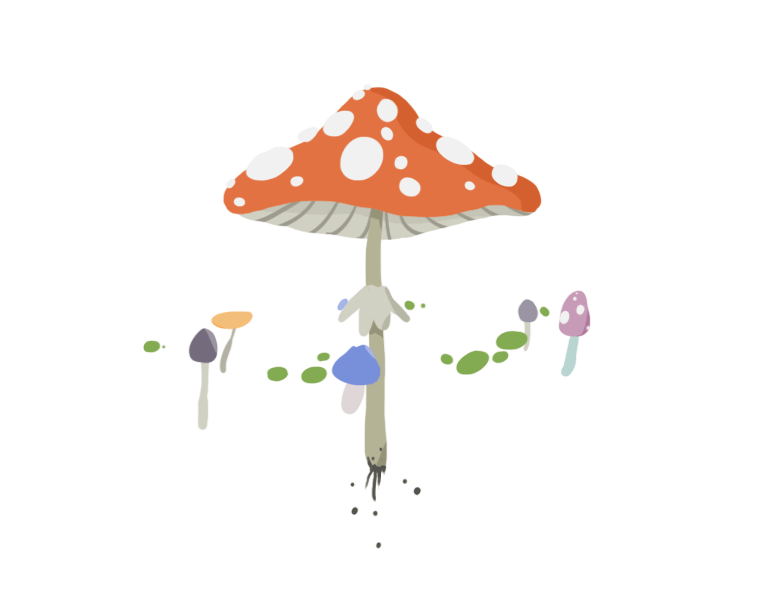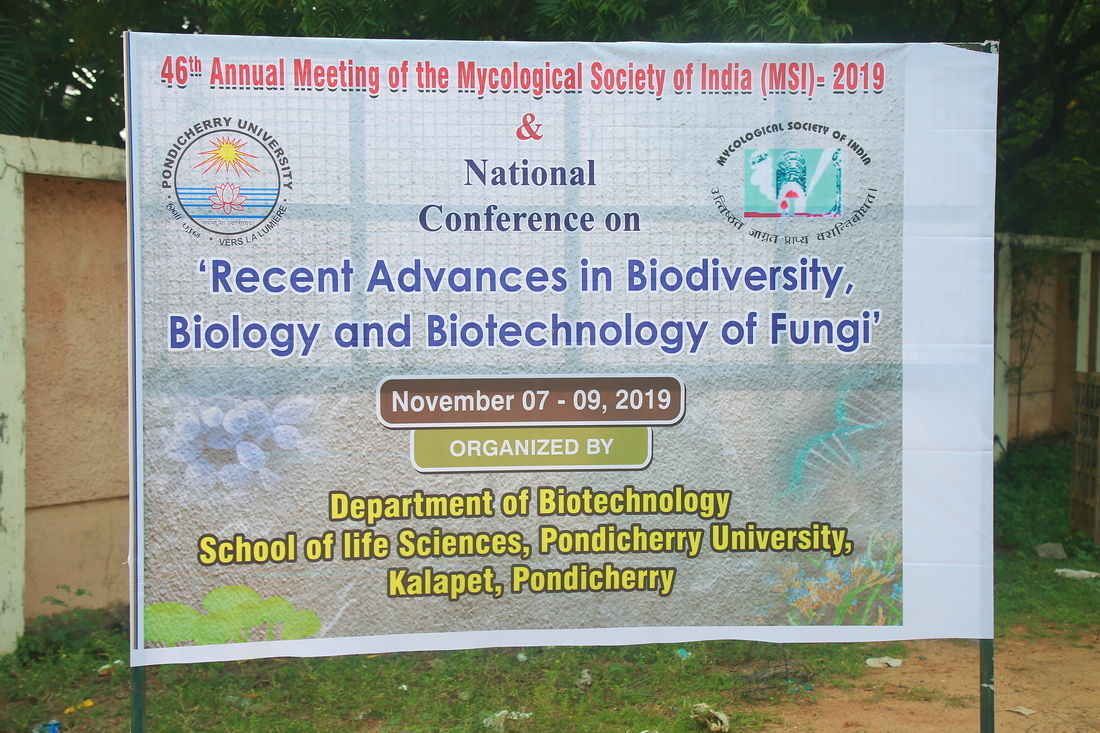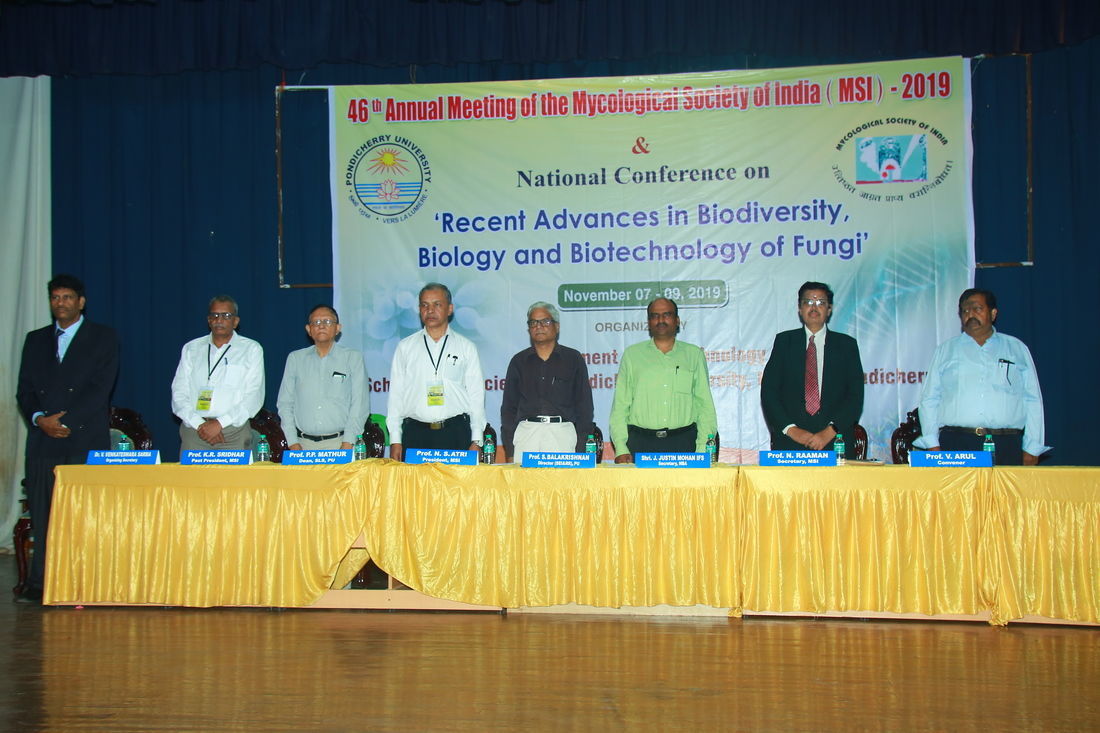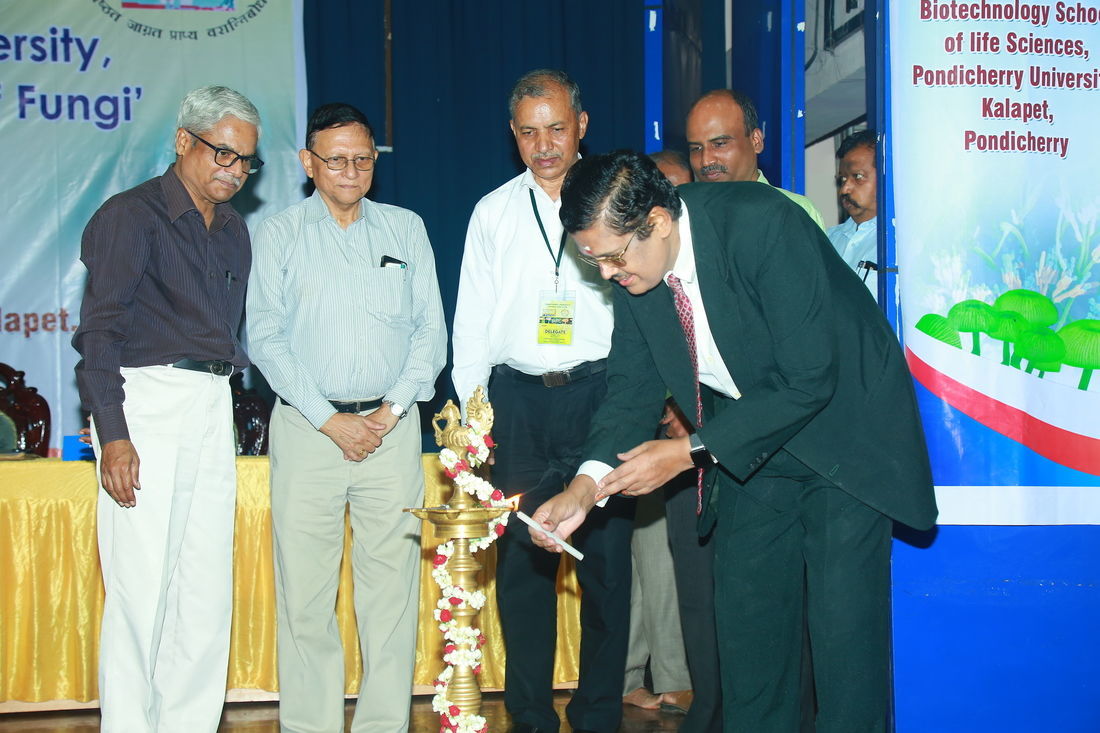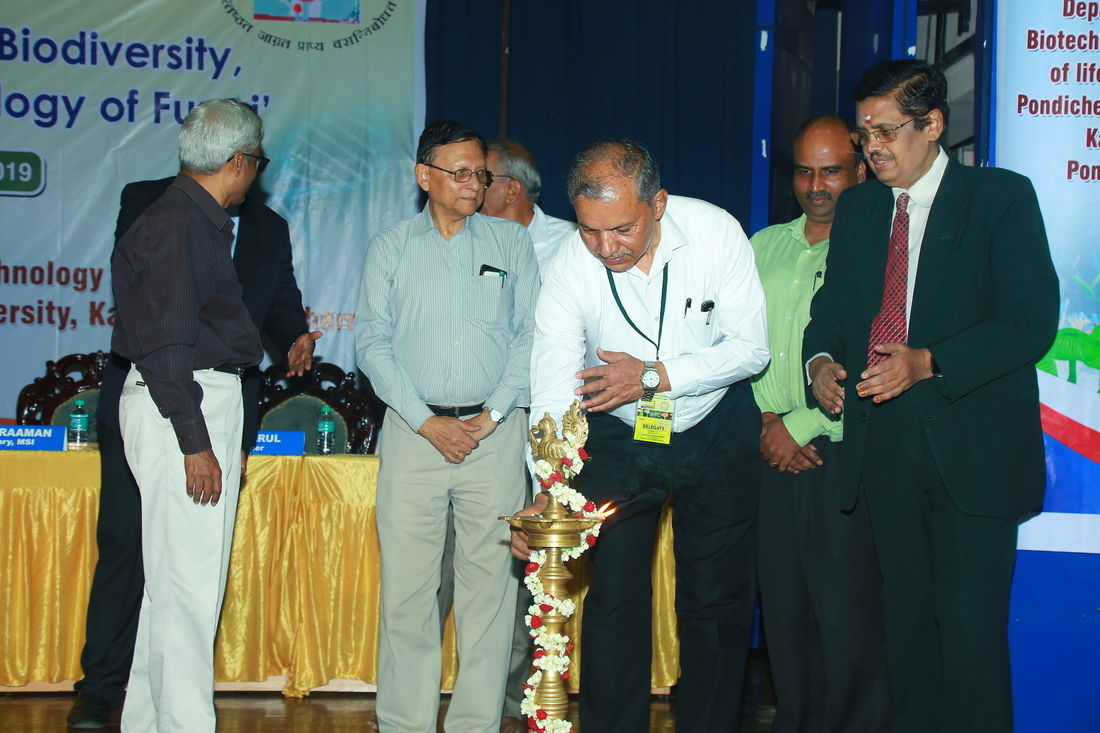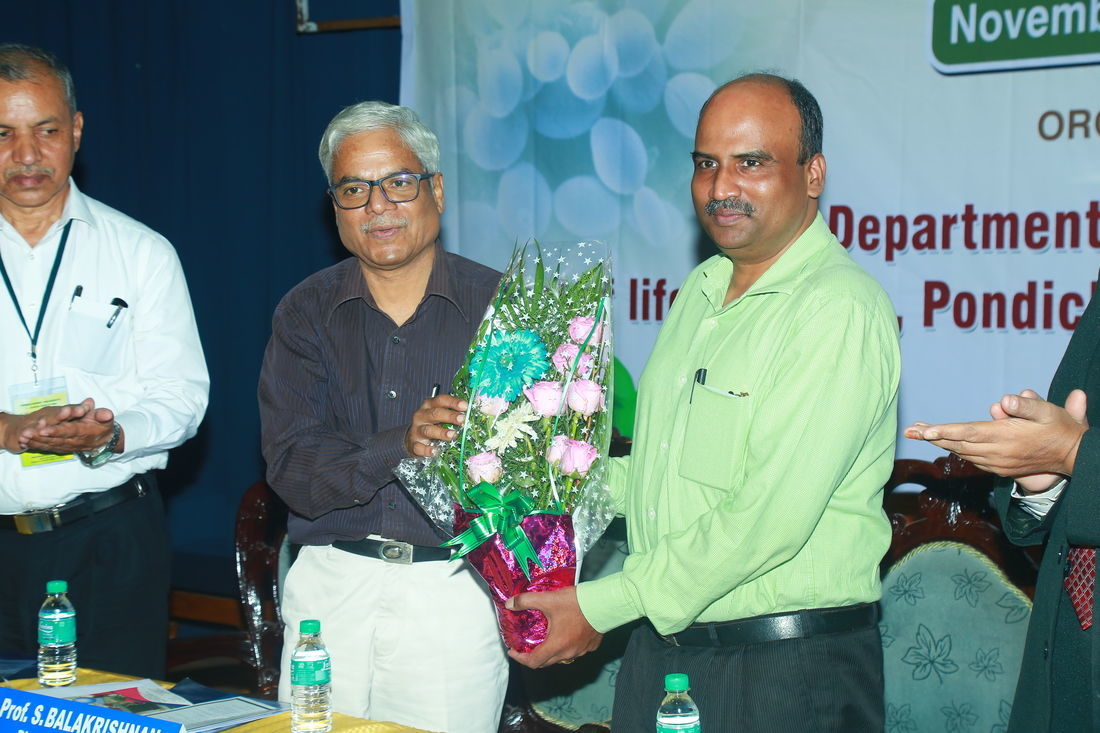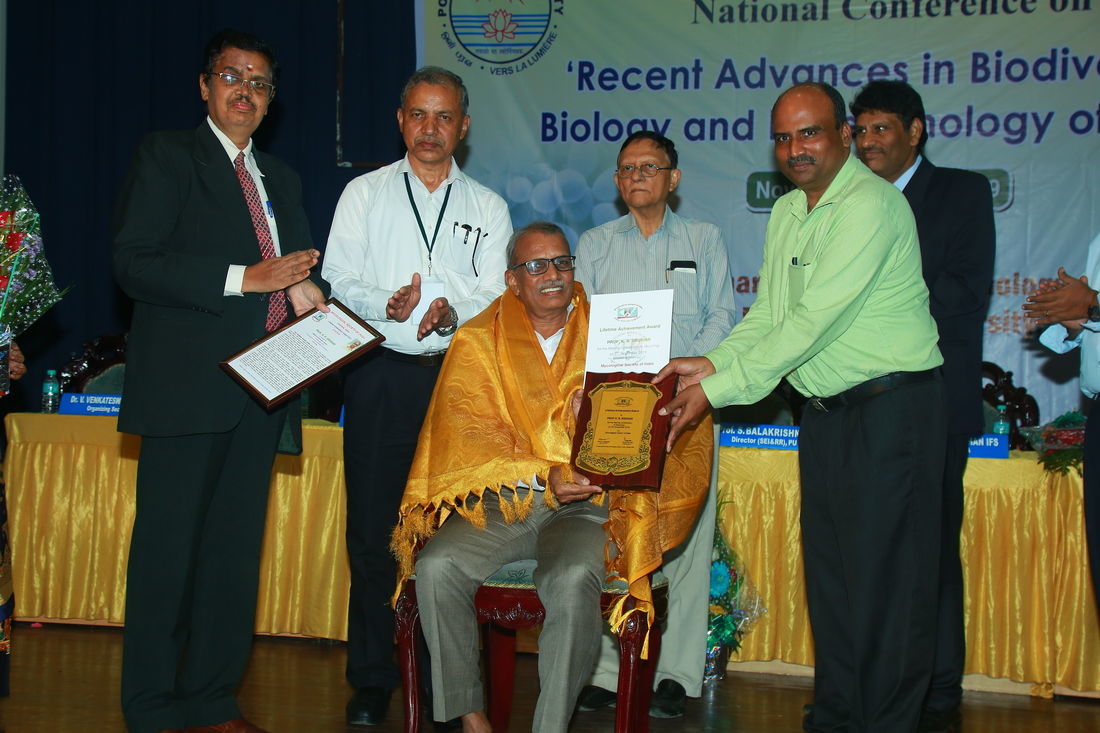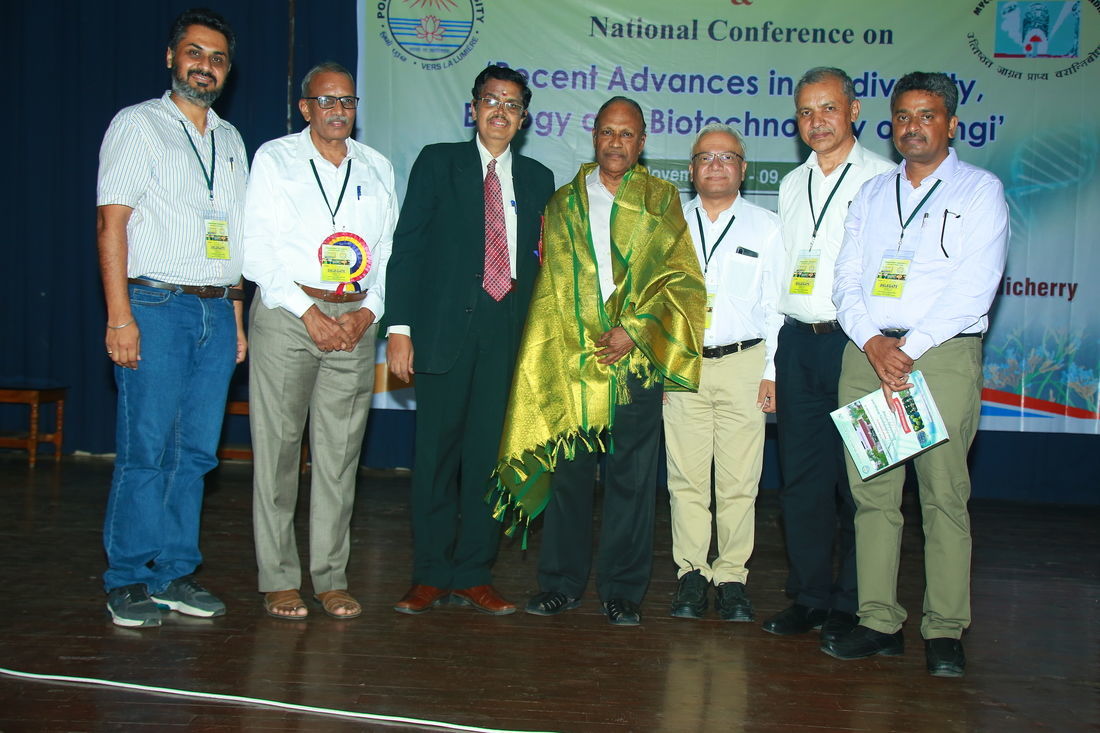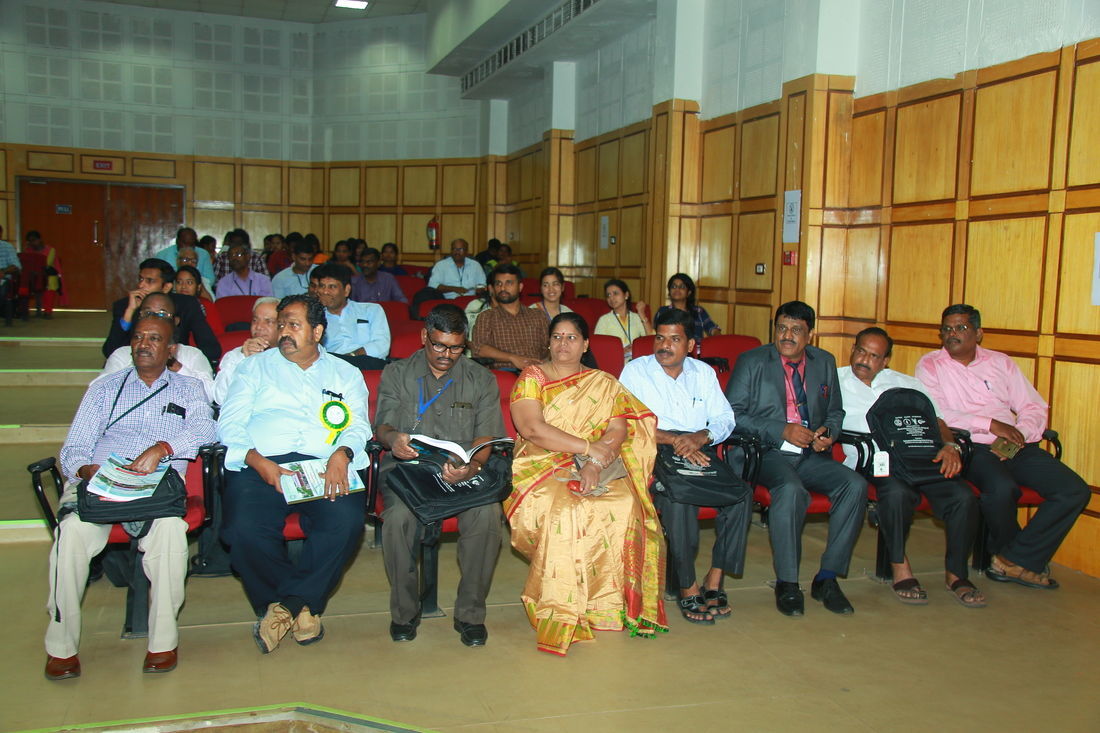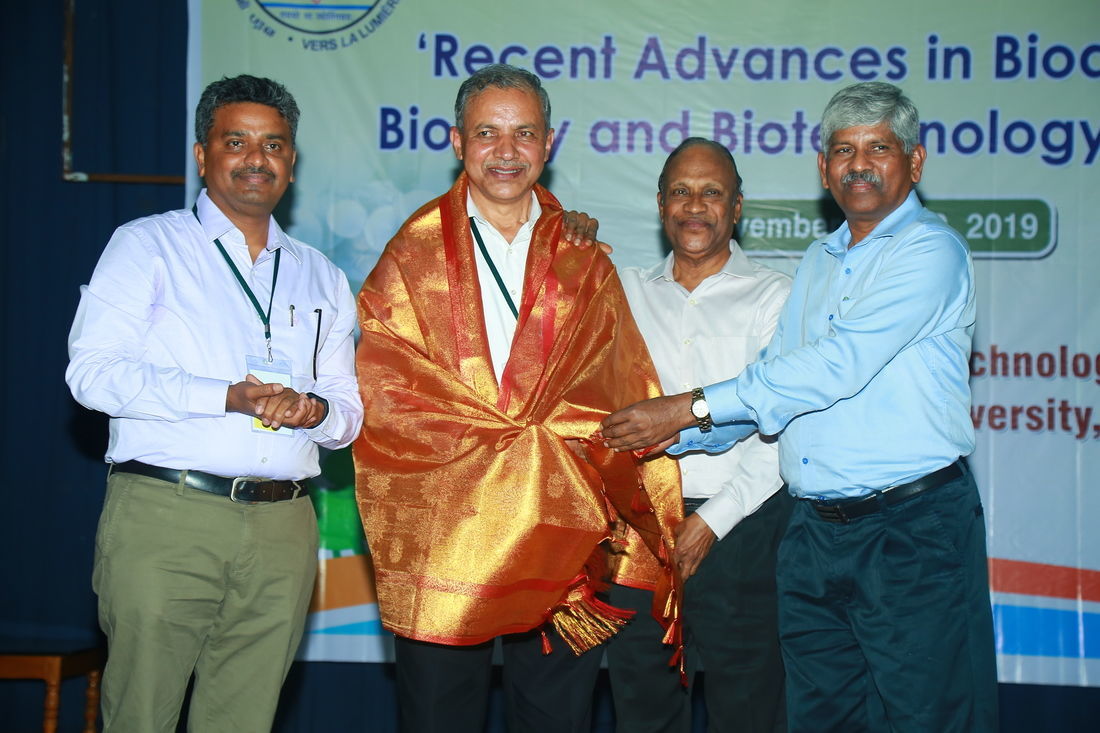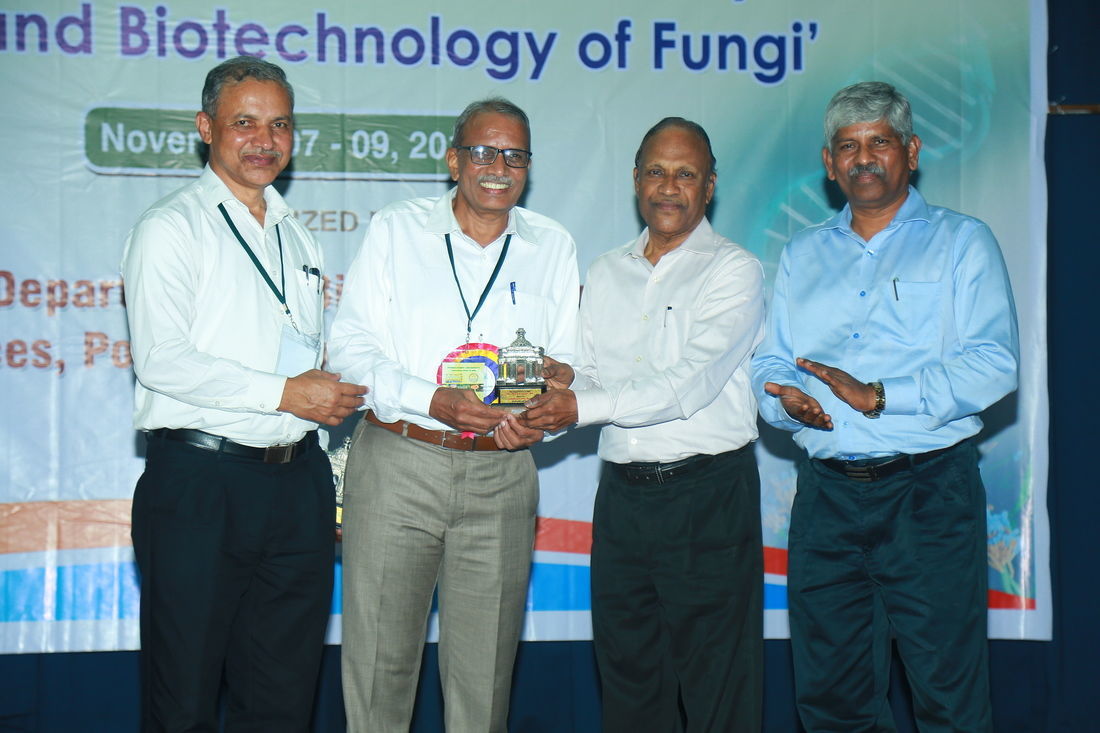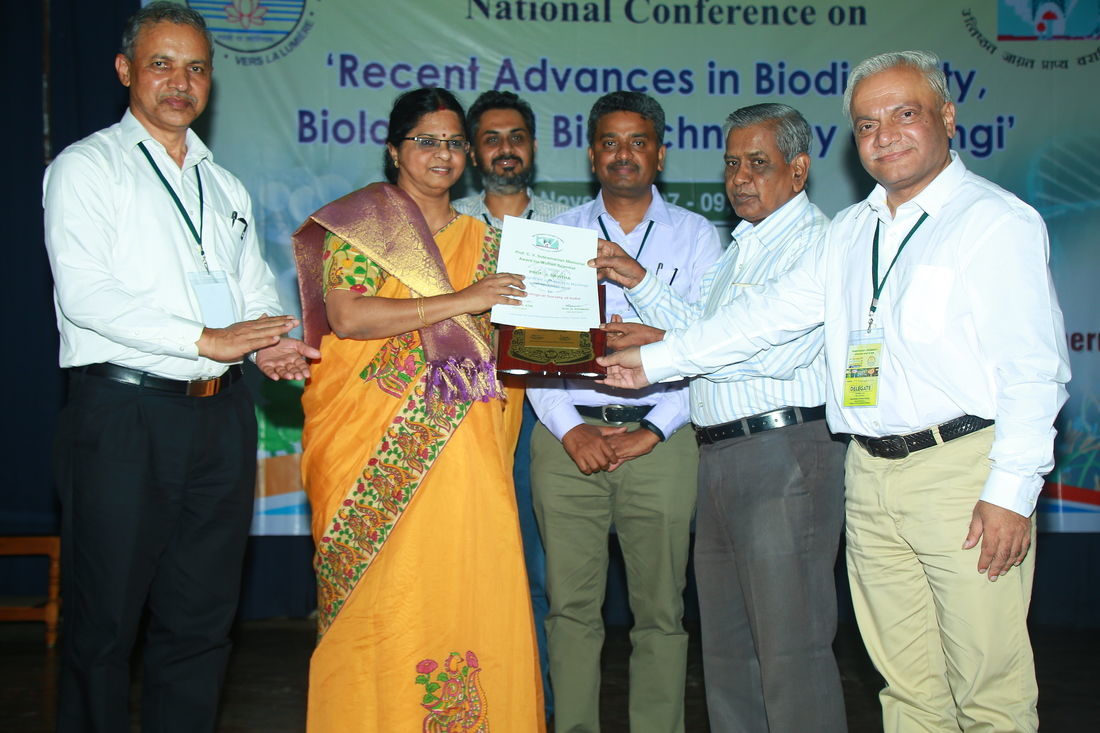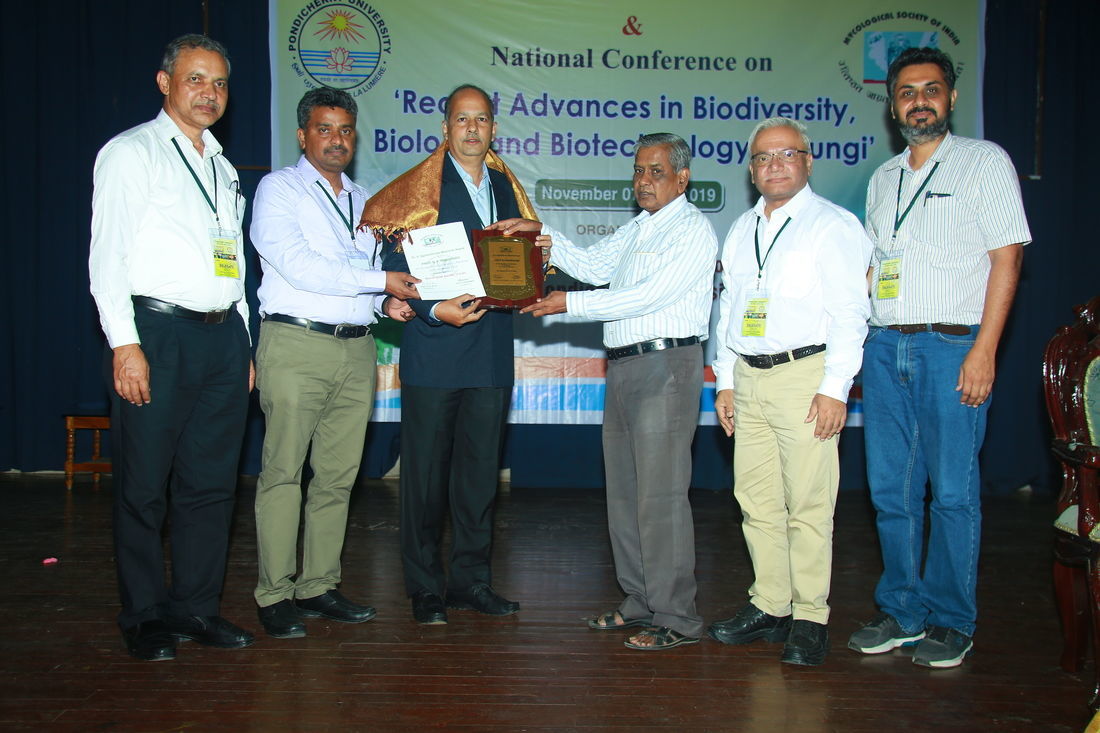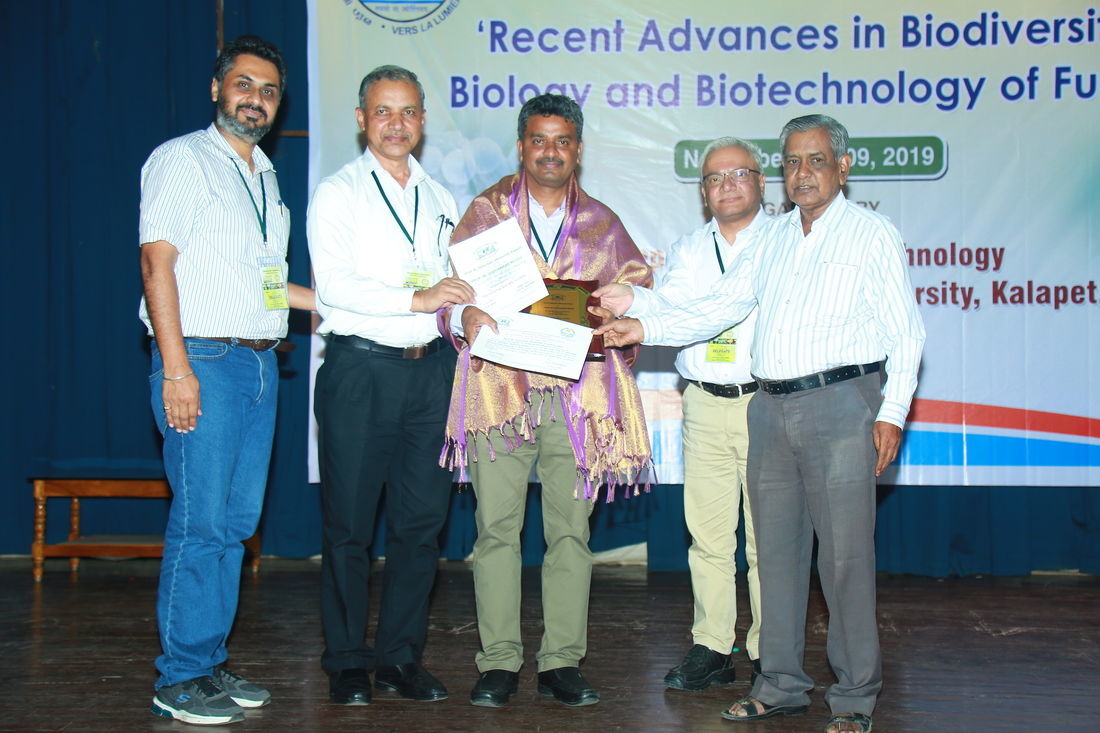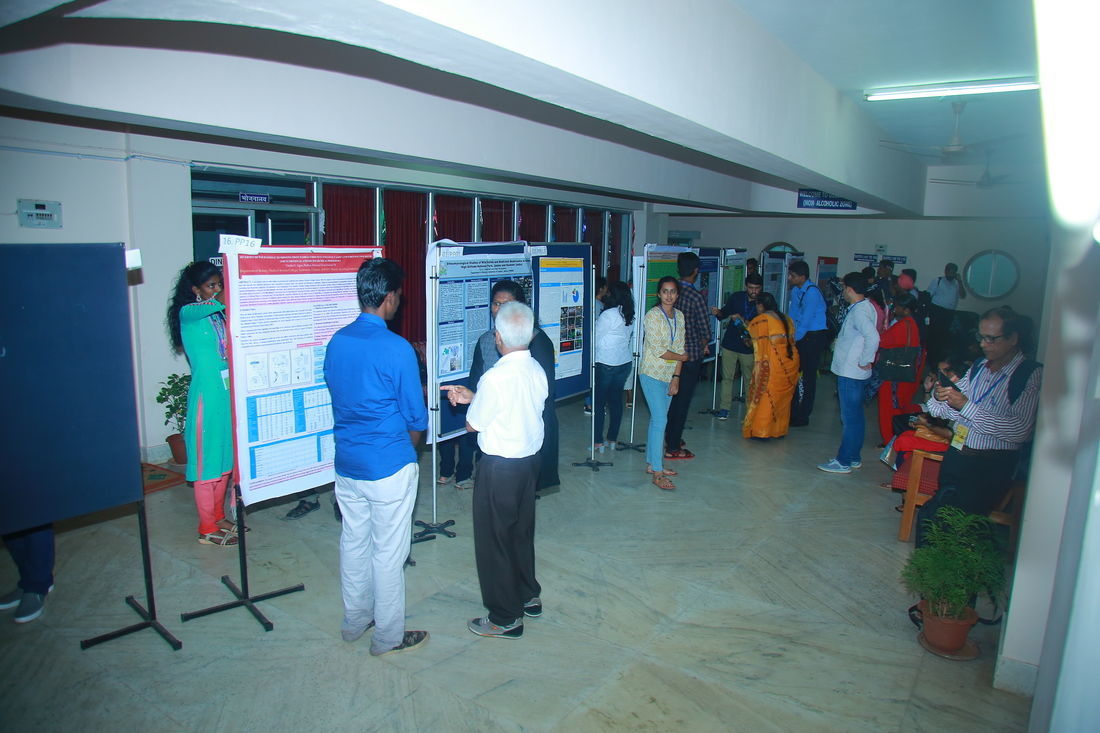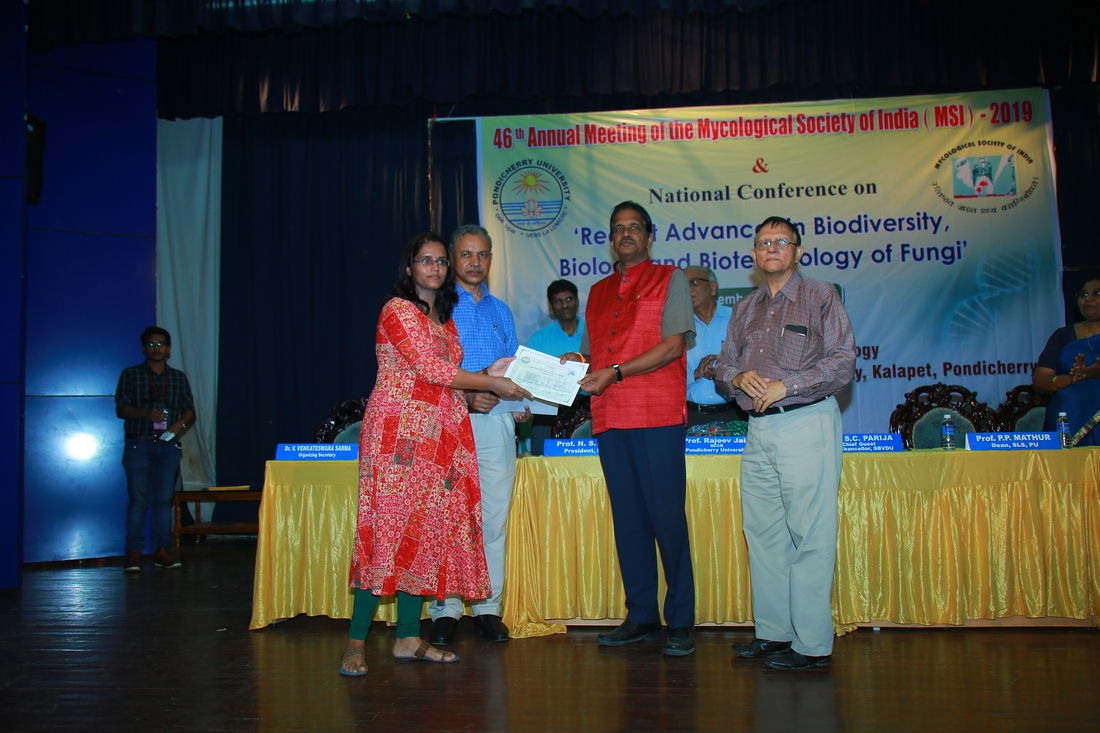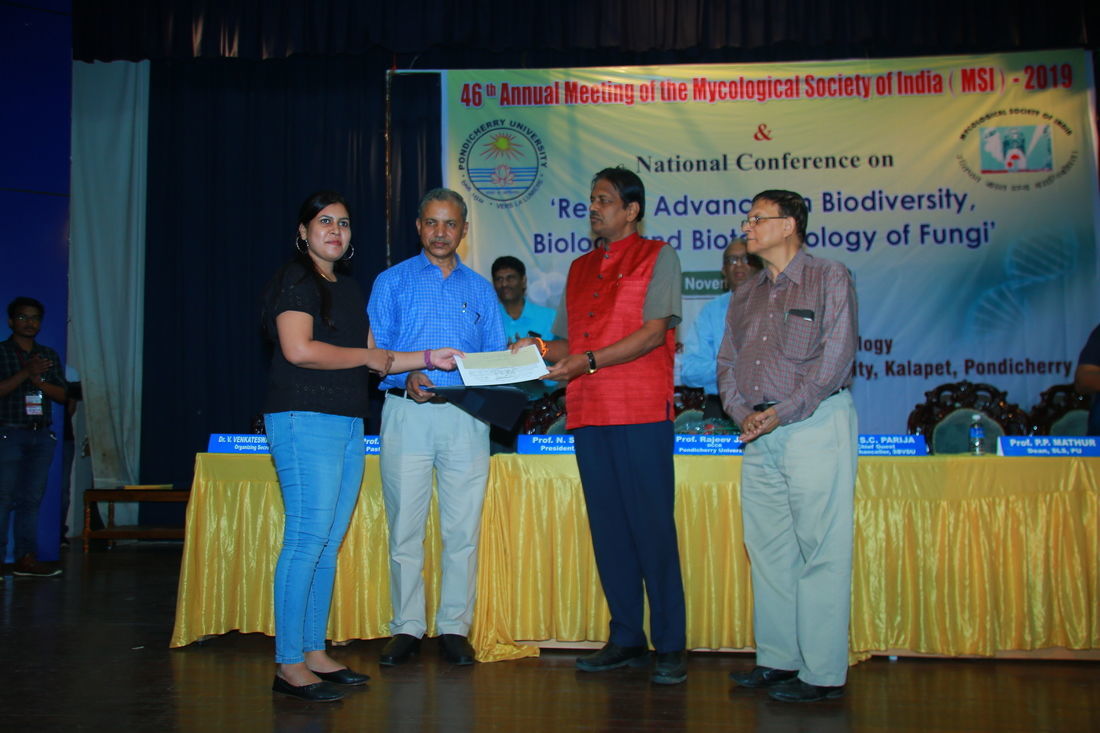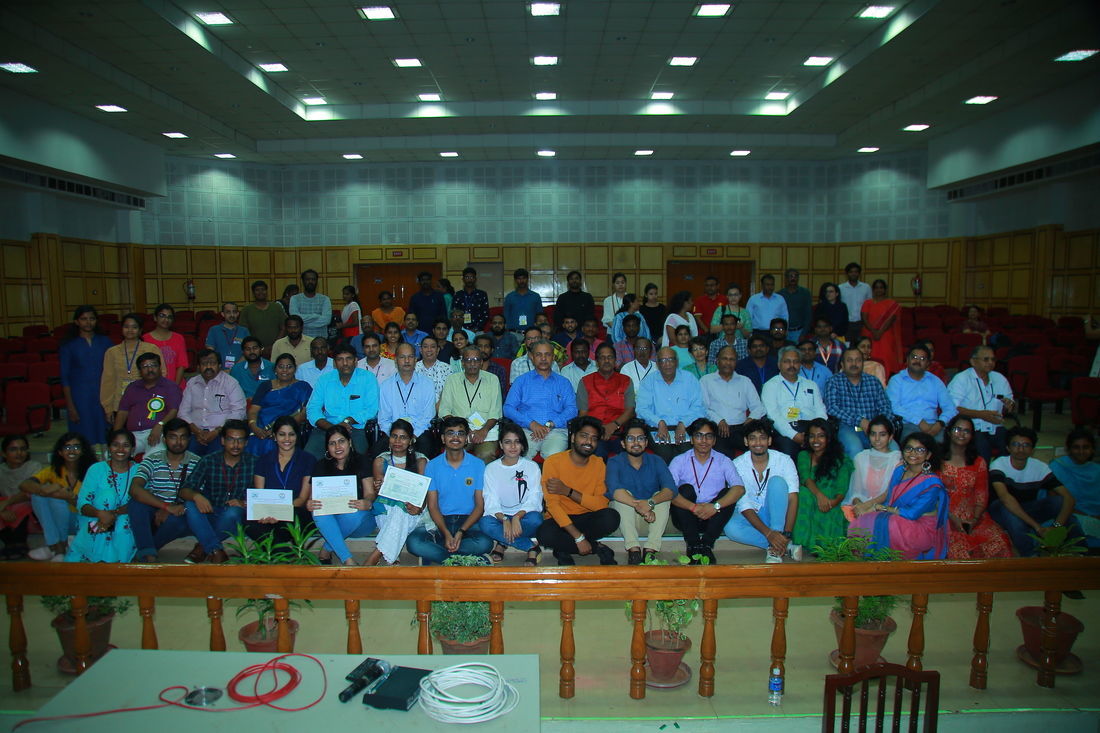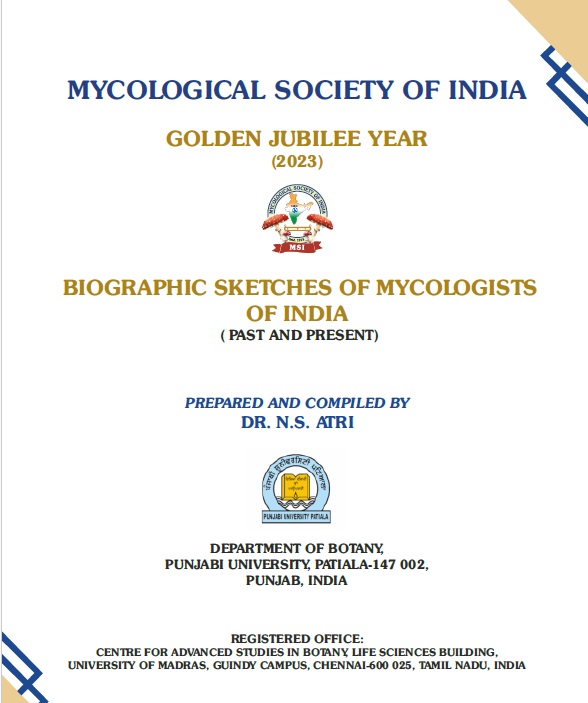Front Pages & Complete
Preface 
doi:10.36460/Kavaka/53/2019/1-7
KAVAKA 53: 1-7 (2019)
Leaf litter saprobic Dictyosporiaceae (Pleosporales, Dothideomycetes): Pseudocoleophoma zingiberacearum sp. nov. from Hedychium coronarium
D.S. Tennakoon1,2,3, D.J. Bhat4,5, C.H. Kuo3 and K.D. Hyde1,2,6*
1School of Science, Mae Fah Luang University, Chiang Rai 57100, Thailand
2Center of Excellence in Fungal Research, Mae FahLuangUniversity,ChiangRai, 57100, Thailand
3Department of Plant Medicine, National Chiayi University, 300 Syuefu Road, Chiayi City 60004, Taiwan
4Formerly Department of Botany, Goa University, Goa, India
5No. 128/1-J, Azad Housing Society, Curca, Goa Velha 403108, India
6Department of Biology, Faculty of Science, Chiang Mai University, Chiang Mai 50200, Thailand
*Corresponding author Email:This email address is being protected from spambots. You need JavaScript enabled to view it.
(Submitted on November 5, 2019; Accepted on December 15, 2019)
ABSTRACT
A new species, Pseudocoleophoma zingiberacearum, is described from dead leaves of Hedychium coronarium (Zingiberaceae) collected from Dahu forest, Alishan Mountain (656 m), Chiayi in Taiwan. Maximum likelihood, maximum parsimony and Bayesian analyses were performed to confirm the phylogenetic affinities of the species. Pseudocoleophoma zingiberacearum is distinguished from other Pseudocoleophoma species based on distinct size differences in ascomata, asci, ascospores and DNA sequence data. Morphology coupled with combined gene analyses of LSU, ITS and tef1-αDNA sequence data, showed that the fungus belongs to the family Dictyosporiaceae, Dothideomycetes. This is the first species of Pseudocoleophoma recorded from the plant family Zingiberaceae. The new species is compared with other Pseudocoleophoma species and a comprehensive description and photo-micrographs are provided.
KEYWORDS: New species, leaf litter, taxonomy, phylogeny, Zingiberaceae

doi:10.36460/Kavaka/53/2019/8-11
KAVAKA 53: 8-11 (2019)
Selection of an efficient Arbuscular Mycorrhizal fungus for inoculating Broom Grass (Tysandaena maxima)
N. Nikhil Sai1, R. Ashwin1, D.J. Bagyaraj1* and R. Venugopala Rao2
1Centre for Natural Biological Resources and Community Development (CNBRCD), 41 RBI Colony, Anand Nagar, Bangalore 560024, Karnataka
2 Laya Resource Centre, Yendada, Visakhapatnam 530045
*Corresponding author Email: This email address is being protected from spambots. You need JavaScript enabled to view it.
(Submitted on August 18, 2019; Accepted on October 20, 2019)
ABSTRACT
Thysanolaena maxima (broom grass) is an ever green non-timber forest produce species. Pot experiment was conducted to screen and select the efficient arbuscular mycorrhizal fungi (AMF) for inoculating broom grass. Screening was done with nine different species of AMF (Funneliformis caledonium, Acaulospora laevis, Rhizophagus fasciculatus, Claroideoglomus etunicatum, Gigaspora margarita, Glomus bagyarajii, Funneliformis mosseae, Rhizophagus intraradices and Ambispora leptoticha). Plant parameters like height, stem girth, biovolume index, total plant dry weight, and mycorrhizal parameters like root colonization, spore number in the root zone soil, etc. have been recorded according to the standard procedures. Based on the important plant parameters like bio-volume index, total plant dry weight, and phosphorus uptake, it is concluded that Claroideoglomus etunicatum is the best AMF for inoculating broom grass.
KEYWORDS: AMF, Thysanolaena maxima, biovolume index, Claroideoglomus etunicatum

doi:10.36460/Kavaka/53/2019/12-21
KAVAKA 53: 12-21 (2019)
Climate change is real: fungal perspective!
Apekcha Bajpai1* and Bhavdish N. Johri2
1Department of Microbiology, Barkatullah University, Bhopal 462026 (M.P.), India
2Department of Biotechnology, Barkatullah University, Bhopal 462026 (M.P.), India
*Corresponding author email: This email address is being protected from spambots. You need JavaScript enabled to view it.
(Submitted on September 2, 2019; Accepted on November 5, 2019)
ABSTRACT
Climate change is apparent around the globe as it is dramatically affecting the natural ecosystems. The preliminary cause of climate change is increased green house gases, deforestation, and anthropogenic activities and the resultant change is seen in the form of extreme events like increased temperature, rainfall, permafrost thaw, glacial retreats, sea level, greater occurrence of wildfires, etc (NASA, 2016). It is causing tremendous effect on biodiversity therefore it becomes a serious concern globally. At the face of climate change the macroscopic organisms are either extinct or are at the verge of extinction and may adapt themselves for survival; efforts are successfully laid to conserve them but also it is equally important to focus on the existence, adaptation and alterations taking place in community composition of microscopic world. Impact of 1 trillion microbes inhabiting the planet earth on climate can be huge as they can accelerate climate change, exacerbated by pollution and habitat loss. However, they are understudied on climatic front, especially fungi, which represents a major portion of eukaryotic kingdom, resides in diverse habitats, constitutes considerable biomass on planet earth and regulate soil carbon feedback loop by deriving biogeochemical cycles; therefore they could be vulnerable to climate change largely by habitat loss. This review is an effort to draw the attention towards how fungal diversity responds to climate selection pressure either by adaptation or shifts in community composition observed during weather extremes.
KEYWORDS: Fungi, climate change, adaptation, green house gas, temperature

doi:10.36460/Kavaka/53/2019/22-28
KAVAKA 53: 22-28 (2019)
Notes on stinkhorns (Phallaceae) in the Western Ghats and West coast of India
N.C. Karun1 and K.R. Sridhar2,3,*
1Western Ghats Macrofungal Research Foundation, Bittangala, Virajpet 571 218, Kodagu, Karnataka, India
2Department of Biosciences, Mangalore University, Mangalagangotri, Mangalore 574 199, Karnataka, India
3Centre for Environmental Studies, Yenepoya University, Mangalore 575 018, Karnataka, India
Corresponding author Email:This email address is being protected from spambots. You need JavaScript enabled to view it.
(Submitted on September 20, 2019; Accepted on November 19, 2019)
ABSTRACT
The Western Ghats and west coast of India are known for several edible, medicinal and ectomycorrhizal fungi. During macrofungal expedition in the Western Ghats and southwest coast of Karnataka, several macrofungi belonging to the family Phallaceae were collected. This study embodies morphological description with key for seven species of Phallaceae belonging to five genera (Dictyophora cinnabarina, Ileodictyon gracile, Lysurus brahmagirii, Phallus atrovolvatus, P. duplicatus, P. merulinus and Simblum periphragmoides).
KEYWORDS: Macrofungi, Dictyophora, Ileodictyon, Lysurus, Phallus, Simblum

doi:10.36460/Kavaka/53/2019/29-33
KAVAKA 53: 29-33 (2019)
Compatible solutes in halophilic filamentous fungi
Sarita W. Nazareth1, Valerie Gonsalves1,2*and Sushama M. Gaikwad3
1Department of Microbiology, Goa University, Taleigao Plateau, Goa 403206, India.
2Department of Microbiology, St. Xavier's College, Mapusa, Goa
3Division of Biochemical Sciences, National Chemical Laboratory, Dr. HomiBhabha Road, Pune 411008, India.
*Corresponding author Email: This email address is being protected from spambots. You need JavaScript enabled to view it.
(Submitted on August 18, 2019; Accepted on November 22, 2019)
ABSTRACT
Halophilic fungi combat the osmotic stress of their saline environment by the accumulation of compatible solutes, also termed as osmolytes. Filamentous fungi isolated from various athalassohaline, thalassohaline and polyhaline econiches were selected from different genera and species, on the basis of their classification as obligate and facultative halophiles. The salt tolerance index of the isolates proved their euryhaline nature, able to adapt to a wide range of salt concentrations, the obligate halophiles however, showing a tendency to a stenohaline nature, with a narrower tolerance range. Examination of the osmolyte production indicated that sucrose, trehalose, arabitol, erythritol, inositol, mannitol, dulcitol, xylitol, galactose and glucose were present, the polyols being found in each of the isolates studied. The variations in concentrations of osmolyte pools vis-à-vis the salt tolerance characteristics in the different genera and species, did not indicate any correlation with the obligate or facultative halophilic nature of the fungi, or with the saline econiches from which they were obtained, as well as with the different genera. However, the similarity in the different types of osmolytes between the different genera and species, indicated their notable role in osmoadaptation in fungi in general.
KEYWORDS: Osmolyte, halophilic, fungi, hypersaline, polyhaline

doi:10.36460/Kavaka/53/2019/34-41
KAVAKA 53: 34-41 (2019)
Arbuscular Mycorrhizal (AM) fungal diversity on stabilized iron ore mine dumps in Goa, India
Tanvi N. Prabhu and B. F. Rodrigues*
Department of Botany, Goa University, Goa 403 206.
*Corresponding author Email: This email address is being protected from spambots. You need JavaScript enabled to view it.
(Submitted on November 30, 2019 ; Accepted on December 13, 2019)
ABSTRACT
The present study was carried out to explore arbuscular mycorrhizal (AM) fungal diversity on stabilized iron ore mine dumps in Goa. A total of 84 plant species belonging to 36 families were examined for the occurrence of AM fungal diversity in two study sites of which 21 plants were common to both sites. All the plants undertaken for study were found to be mycorrhizal. In our study 19 AM fungal species belonging to eight genera, viz. Acaulospora, Funneliformis, Gigaspora, Glomus, Racocetra, Rhizophagus, Sclerocystis and Scutellospora were recovered. Acaulospora was dominant genus at both the sites. Based on Relative abundance (RA) and Isolation frequency (IF), Gigaspora albida was found to be dominant at site 1, while Scutellospora heterogama was dominant at site 2.
KEYWORDS: restoration; spore density; root colonization; mine dumps.

doi:10.36460/Kavaka/53/2019/42-47
KAVAKA 53: 42-47 (2019)
A checklist of agaricoid russulaceous mushrooms from Jammu and Kashmir, India
Komal Verma*, S.A.J. Hashmi*, N.S. Atri** and Yash Pal Sharma*
*Department of Botany, University of Jammu, Jammu -180006
**Department of Botany, Punjabi University, Patiala-147002
Corresponding author’s Email: This email address is being protected from spambots. You need JavaScript enabled to view it.
(Submitted on August 13, 2019 ; Accepted on November 15, 2019)
ABSTRACT
A literature based checklist of the family Russulaceae occurring in Jammu and Kashmir (J&K), India is presented. It consists of 51 species of russulaceous mushrooms belonging to three genera viz., Russula, Lactarius and Lactifluus. Genus Russula is the most speciose rich (35 spp.), followed by Lactarius (12 spp.) and Lactifluus (4 spp.). This checklist provides a comprehensive data of the russulaceous mushrooms from J&K.
KEYWORDS: Ectomycorrhizal, inventory, Jammu, Kashmir Valley, Russulaceae

doi:10.36460/Kavaka/53/2019/48-54
KAVAKA 53: 48-54 (2019)
Metallothioneins mediated intracellular copper homeostasis in ectomycorrhizal fungus Suillus indicus
Shikha Khullar, Anuja Sharma, Radhika Agnihotri and M. Sudhakara Reddy*
Department of Biotechnology, Thapar Institute of Engineering & Technology, Patiala, 147004, Punjab, India
*Corresponding author email: This email address is being protected from spambots. You need JavaScript enabled to view it.
(Submitted on October 27, 2019; Accepted on December 20, 2019)
ABSTRACT
Ectomycorrhizal fungi (ECM) are known to protect the host plant from heavy metal stress. But the information on molecular mechanisms involved in this process is still ambiguous. The present study intends on providing insight into the Cu detoxification mechanism in ECM fungus Suillus indicus, a new species isolated from north western Himalayas. Two metallothionein genes SuiMT1 and SuiMT2, were isolated from the S. indicus cDNA and characterized for their potential role in Cu-detoxification and homeostasis. The response of these genes to the extracellular concentrations of copper was studied by qPCR analysis. Both genes were actively induced under exogenous Cu stress, thus can be classified as Cu-thioneins. Further, the functional complementation of these genes in the Cu sensitive yeast mutant cup1Δ, successfully restored their wild type phenotype of Cu tolerance. This shows that both SuiMT1 and SuiMT2 plays an important role in Cu detoxification and homeostasis in ECM fungus S. indicus.
KEYWORDS: Ectomycorrhizal fungi, Suillus indicus, metallothionein, copper, metal homeostasis, yeast complementation, qPCR

doi:10.36460/Kavaka/53/2019/55-60
KAVAKA 53: 55-60 (2019)
Observations on entomopathogenic fungus Ophiocordyceps neovolkiana on Coconut root grub Leucopholis coneophora
P. K. Laya1*, C. K. Yamini Varma2, K. Anita Cherian3, M. M. Anees4 and C. R. Rashmi5
1,3,4Department of Plant Pathology, College of Horticulture, Vellanikkara 680656, Kerala, India
2 Department of Plant Pathology, AICRP on Spices, Pepper Research Station, Panniyur 670142, Kerala, India
5Department of Vegetable Science, AICVIP, College of Horticulture, Vellanikkara 680656, Kerala, India
*Corresponding author Email: This email address is being protected from spambots. You need JavaScript enabled to view it.
(Submitted on August 20, 2019; Accepted on November 19, 2019)
ABSTRACT
Ophiocordyceps are entomopathogenic fungi on arthropods which parasitize, kill and mummify hosts and produce fruit bodies out of them. Due to the presence of many bioactive compounds like adenosine, cordycepin, ergosterol, these fungi have been used as food as well as medicine against many diseases. Even though cosmopolitan in distribution, many Ophiocordyceps like O. sinensis are mostly confined to high Himalayan Mountains in India, China, Tibet, Nepal, Bhutan at an altitude of 3000 to 5000 msl. Owing to high price, Cordyceps are known as "Himalayan gold". From surveys conducted in coastal sandy areas of Kasargod District (Kerala), it was observed that Ophiocordyceps sp. attacks coconut root grubs (Leucopholis coneophora Burm.), which is an endemic pest in the sandy tracts. The fungus was isolated in potato dextrose agar medium. Detailed morphological studies have been carried out. The molecular characterization showed homology with Ophiocordyceps neovolkiana (Kobayasi) strain KC1 with 98% identity. The ITS sequence has been deposited at NCBI with accession # MH668282 and culture has been deposited in the National Fungal Culture Collection of India with herbarium # NFCCI 4331.
KEYWORDS: Cordyceps, isolation, morphology, coconut root grub, coastal sandy region, southwest India, Kasargodc

doi:10.36460/Kavaka/53/2019/61-66
KAVAKA 53: 61-66 (2019)
Diversity and antibacterial activity of endophytic fungi associated with a hydrophyte Aponogeton natans
W. Jamith Basha1, Kalyanaraman Rajagopal2, B. Meenashree3, R. Arulmathi4, A.K. Kathiresan5, G. Gayathri5, G. Kathiravan2 and S.S. Meenambiga6*
1Department of Microbiology, Northern Border University, Arar, Kingdom of Saudi Arabia-91431.
2Department of Botany, Ramakrishna Mission Vivekananda College (Autonomous), Chennai- 600004, India.
3Asthagiri Herbal Research Foundation, Chennai- 600096
4Department of Biotechnology, School of Life Sciences, Vels Institute of Science Technology and Advanced Studies (VISTAS), Chennai- 600117, India.
5Department of Microbiology, School of Life Sciences, Vels Institute of Science Technology and Advanced Studies (VISTAS), Chennai- 600117, India
6*Department of Bio-Engineering, School of Engineering, Vels Institute of Science, Technology and Advanced Studies (VISTAS), Chennai, India.
*Corresponding Author Email: This email address is being protected from spambots. You need JavaScript enabled to view it.
(Submitted on August 10, 2019; Accepted on November 12, 2019)
ABSTRACT
An endophytic fungus is an integral part the plant micro biome and colonizes the plant both systemically and non-systemically. In the present investigation endophytic fungi were isolated from leaf of a medicinally important hydrophyte, Aponogeton natans. Three hundred and fifty one isolates belonging to 15 different species were isolated. Alternaria alternata, Cytospora sp., Aspergillus fumigatus, Chaetomium incomptum and Phomopsis sp. showed higher colonization frequency. Alkaloids and Flavonoids were produced by all endophytic fungi in their crude extract and terpenoid was produced by 14 endophytic fungi. The antibacterial activity of ethyl acetate and diethylether extracts of four dominant endophytic fungi, viz. Alternaria alternata, Chaetomium incomptum, Phomopsis sp. and Sterile form I were tested. Bioactive compounds produced in ethyl acetate extract was more effective than diethylether compounds in inhibiting pathogens. Thus, this study provides an insight on the diversity of endophytic fungi and their varied anti-bacterial properties.
KEYWORDS: Hydrophyte, leaf, alkaloid, flavonoid, gram positive bacteria, gram negative bacteria

doi:10.36460/Kavaka/53/2019/67-71
KAVAKA 53: 67-71 (2019)
Some new records of resupinate non-poroid fungi from Himachal Pradesh
Ramandeep Kaur1, Maninder Kaur2, Ellu Ram1, Ritu1, Avneet Pal Singh1* and G. S. Dhingra1
1Department of Botany, Punjabi University, Patiala 147002
2Department of Botany, Dev Samaj College for Women Ferozepur 152002
*Corresponding author Email: This email address is being protected from spambots. You need JavaScript enabled to view it.
(Submitted on September 27, 2019; Accepted on October 9, 2019)
ABSTRACT
Seven species of resupinate, non-poroid fungi, namely Amethicium luteoincrustatum Hjortstam & Ryvarden, Lopharia mirabilis (Berk. & Broome) Pat., Membranomyces spurius (Bourdot) Jülich, Phanerochaete chrysosporium Burds., Radulodon acaciae G. Kaur, Avneet P. Singh & Dhingra, Sistotrema heteronemum (J. Erikss.) Å. Strid and S. resinicystidium Hallenb. have been recorded for the first time from the state of Himachal Pradesh. Of the seven species described, Membranomyces spurius and Sistotrema resinicystidium are described for the first time from India.
KEYWORDS: Basidiomycota, Agaricomycetes, Himalaya, resupinate wood rotting fungi.

doi:10.36460/Kavaka/53/2019/72-79
KAVAKA 53: 72-79 (2019)
Documentation of yeast-like pathogens causing onychomycosis from Doda Region of Jammu and Kashmir (India)
Sandeep Kotwal1, Geeta Sumbali1* and Sundeep Jaglan2
1Department of Botany, University of Jammu, Jammu, 180006- India
2 Microbial Biotechnology Division, CSIR-Indian Institute of Integrative Medicine, Jammu, India
*Corresponding author Email: This email address is being protected from spambots. You need JavaScript enabled to view it.
(Submitted on August 22, 2019; Accepted on November 25, 2019)
ABSTRACT
Onychomycosis is a fungal infection of the nail bed and nail plate predominantly caused by anthropophilic dermatophytes. However, these days, non dermatophytes, yeasts and yeast-like pathogens are continuously emerging as important etiological agents of onychodystrophy. It affects particularly the nails of elders, diabetics, immune compromised individuals, smokers and patients with psoriasis, reduced peripheral circulation or tinea pedis, as well as those with history of nail trauma or with family history of onychomycosis. The treatment of onychomycosis is dependent on several factors, including the type of onychomycosis and causative organism. A number of techniques have been used in the past to accurately diagnose onychomycosis and among these, microscopy and culturing are being used most frequently. However, these techniques are not completely reliable for confirming the identity of yeast and yeast-like pathogens. Therefore, during the present investigation, both mycological and molecular techniques were attempted to identify the yeast-like species causing onychomycosis. On this basis, three yeast-like species viz., Candida parapsilosis (Ashford) Langeron & Talice, C. tropicalis (Castellani) Berkhout and Aureobasidium pullulans (de Bary & Lowenthal) Arnaud were identified to cause finger and toe nail infections among the residents of hilly Doda region (J.&K.), India.
KEYWORDS: Onychomycosis, Candida, Aureobasidium, NCBI, MEGA6 software, GenBank

doi:10.36460/Kavaka/53/2019/80-81
KAVAKA 53: 80-81 (2019)
A rare Russula (Russulaceae) from Kerala, India
S. Ratheesh1, K.B. Vrinda* and C.K. Pradeep
Plant Systematics & Evolutionary Science Division, Jawaharlal Nehru Tropical Botanic Garden & Research Institute, Palode, Thiruvananthapuram 695 562, Kerala
1Research centre: University of Kerala
*Corresponding author Email.: This email address is being protected from spambots. You need JavaScript enabled to view it.
(Submitted on October 28, 2019; Accepted on November 29, 2019)
ABSTRACT
Russula innocua, a rare species is collected from Kerala state during an ongoing study on the Russulaceae of Kerala. Full description, field photographs and illustrations of this species are provided.
KEYWORDS: Ectomycorrhiza, new record, Russula, taxonomy

doi:10.36460/Kavaka/53/2019/82-84
KAVAKA 53: 82-84 (2019)
Gyrothrix kigeliae: A novel setose fungus from Central India
Smriti Bhardwaj*, Ravindra Singh Thakur, and A. N. Rai
Laboratory of Mycotaxonomy, Department of Botany, Dr. Hari Singh Gour University, Sagar, M. P.
*Corresponding author Email: This email address is being protected from spambots. You need JavaScript enabled to view it.
(Submitted on September 10, 2019; Accepted on December 2, 2019)
ABSTRACT
A new species of anamorphic setose dematacious hyphomycete, Gyrothrix kigeliae was isolated from dead leaves of Kigelia africana (Lam.) Benth. collected from Dr. H. S. Gour University campus, Sagar M. P. India, is described in this paper. The new species is recognized based on morphological comparison with hitherto described species in the genus. Gyrothrix kigeliae exhibits both astromatic and stromatic colonies on the substrate and differs from other species by smaller conidiophore and conidia. Besides photomicrographic illustration and SEM pictures of the fungus are provided.
KEYWORDS: Leaf litter, setae, Gyrothrix, dematacious hyphomycetes

doi:10.36460/Kavaka/53/2019/85-91
KAVAKA 53:85-91 (2019)
Endophytic mycobiota recorded from Clerodendrum inerme and their biological activities
Madhankumar Dhakshinamoorthy and Kannan Kilavan Packiam
Department of Biotechnology, Bannari Amman Institute of Technology, Sathyamangalam, Erode District-638401, TamilNadu, India.
Corresponding authors Email: This email address is being protected from spambots. You need JavaScript enabled to view it.
(Submitted on July 15, 2019; Accepted on November 30, 2019)
ABSTRACT
Endophytic fungi were isolated from the medicinal plant, Clerodendrum inerme (L.) Gaertn., which was collected from Western Ghats of Sathyamangalam Tiger Reserve, Sathyamangalam, Erode District, Tamil Nadu. As many as 150 segments were screened from leaves, twigs and shoots of selected medicinal plant. A total of 31 species which belong to 31 genera were recorded among which 12 isolates were classified into sterile morpho species. Biodiversity indices such as Gleason index (G) and Shannon index of leaf, shoot, twigs shows the maximum species diversity. Jaccard's similarity coefficient represents the maximum similarity in leaves-twigs (0.20) followed by leaves-shoot (0.2631) and twigs-leaves (0.1764). The selected endophytic fungal strains were mass cultured in modified PDB medium at 27±2°C for 14 days. Mycelia and broth were separated by filtration. The mycelial cells were ultra sonicated and the biological compounds were extracted through chloroform and methanol. The compounds were tested and also quantified, the antioxidant property was evaluated by employing DPPH, FRAP, FTC, TPC, and TBA assays. The antioxidant and free radical scavenging activity recorded was around 99% inhibition at the concentration of 6.25-20mg/mL. The total phenolic content of 3.142-4.445±2.85 µg/mL was evaluated and compared with standard Tannic acid. The endophytic fungal extract was evaluated for its antibacterial activities. Agar well diffusion exhibits the inhibition range of 15-22 mm. The Minimum Inhibitory Concentration showed the antibacterial potency at lower concentration of 12.5-25 µg/mL with all gram positive and gram negative bacterial strains studied.
KEYWORDS: Endophytes, Biodiversity indices, Minimum inhibitory concentration, DPPH, TPC

doi:10.36460/Kavaka/53/2019/92-95
KAVAKA 53: 92-95 (2019)
New records of genus Marasmius (Marasmiaceae) from India
Munruchi Kaur and Aakriti Gupta
Department of Botany, Punjabi University, Patiala-147002, India
Corresponding author Email: This email address is being protected from spambots. You need JavaScript enabled to view it.
(Submitted on November 15, 2019; Accepted on December 25, 2019)
ABSTRACT
Three species of Marasmius, viz. M. fulvoferrugineus Gilliam, M. pallescens Murrill and M. pseudobambusinus Desjardin are recorded from India. Comprehensive descriptions, photographs and discussion on each species is provided.
KEYWORDS: Broom cells, Sicci, non- institious, institious.

doi:10.36460/Kavaka/53/2019/96-99
KAVAKA 53: 96-99 (2019)
In vitro cultivation of Gigaspora decipiens using transformed roots of Linum usitatissimum
Dhillan, M. Velip and B. F. Rodrigues*
Department of Botany, Goa University, Goa 403 206
*Corresponding author Email: This email address is being protected from spambots. You need JavaScript enabled to view it.
(Submitted on November 12, 2019; Accepted on December 17, 2019)
ABSTRACT
Symbiosis between arbuscular mycorrhizal fungi (AMF) and higher plants provides a wide scope for its use as biofertilizer. Mass multiplication of pure AMF cultures however, has always been a challenge. Use of transformed roots for the establishment of monoxenic cultures of AMF is being done in recent years but with a low success rate with regard to spore production in vitro. The present study exhibits a successful attempt towards in vitro culturing and sporulation of Gigaspora decipiens Hall & Abbott in transformed roots of Linum usitatissimum L. (Flax) Also, the present study describes a technique wherein spore germination and in vitro root colonization can be brought about in the same Petri plate rather than transferring a prior germinated AM spore among the T-DNA roots. This technique minimizes the effect of relocation of germinating spores thereby hastening root colonization.
KEYWORDS: Sporulation, culturing, AMF, monoxenic culture, transformed roots

doi:10.36460/Kavaka/53/2019/100-105
KAVAKA 53: 100-105 (2019)
Some interesting records of corticioid and poroid fungi from district Kullu (Himachal Pradesh)
Ellu Ram, Ramandeep Kaur, Avneet Pal Singh* and Gurpaul Singh Dhingra
Department of Botany, Punjabi University, Patiala, 147002, Punjab, India
*Corresponding author Email: This email address is being protected from spambots. You need JavaScript enabled to view it.
(Submitted on September 28, 2019; Accepted on November 19, 2019)
ABSTRACT
An account of three corticioid fungi i.e., Byssomerulius corium (Pers.) Parmasto, Crustoderma drynium (Berk. & M.A. Curtis) Parmasto, Skvortzovia georgica (Parmasto) G. Gruhn & Hallenb. and four poroid species i.e., Earliella scabrosa (Pers.) Gilb. & Ryvarden, Ganoderma australe (Fr.) Pat., Physisporinus lineatus (Pers.) F. Wu, Jia J. Chen & Y.C. Dai and Pycnoporus sanguineus (L.) Murrill, is presented based on the collections made from district Kullu (Himachal Pradesh). All these seven species are new additions to the mycoflora of district Kullu (Himachal Pradesh). Of these, Skvortzovia georgica and Pycnoporus sanguineus are being described as new record for India and Himachal Pradesh, respectively. It is also important to mention here that five of the genera namely, Byssomerulius, Crustoderma, Earliella, Pycnoporus and Skvortzovia are being described for the first time from the study area.
KEYWORDS: Corticioids, polypores, wood rotting fungi, resupinate, basidiocarp

doi:10.36460/Kavaka/53/2019/106-116
KAVAKA 53: 106-116 (2019)
Morphological and molecular characterization of Fusarium verticillioides (F. moniliforme) associated with Post-Flowering Stalk Rot (PFSR) of Maize in Karnataka
S. Dharanendra Swamy1, S. Mahadevakumar1, H.B. Hemareddy2, K.N. Amruthesh1, S. Mamatha2, G. Sridhara Kunjeti3, K. R. Sridhar4, R. Swapnil2, T. Vasantha Kumar5 and N. Lakshmidevi6
1Department of Studies in Botany, Manasagangotri, University of Mysore, Mysuru-570 006, Karnataka, India
2Bayer Crop Science Ltd., Kallinayakanahalli, Thondebhavi Post - 561213, Gauribidanur Taluk, Chikkaballapura District, Karnataka, India.
3Monsanto Holdings Pvt. Ltd. (a subsidiary of Bayer AG), Kallinayakanahalli, Thondebhavi Post - 561213, Gauribidanur Taluk, Chikkaballapura District, Karnataka, India
4Department of Biosciences, Mangalore University, Mangalagangotri, Mangalore 574 199, Karnataka, India.
5Green Life Science Technologies, #765, 8th main, B Block, 3rd stage, Vijayanagara, Mysuru - 570 030, Karnataka, India.
6Department of Studies in Microbiology, Manasagangotri, University of Mysore, Mysuru-570 006, Karnataka, India.
*Corresponding author Email:This email address is being protected from spambots. You need JavaScript enabled to view it.
(Submitted on November 5, 2019; Accepted on December 17, 2019)
ABSTRACT
Maize (Zea mays L.) is the major staple cereal crop in the world and is the third-largest grown cereal crop in India. Field surveys conducted from 2013-15 recorded stalk rot incidence ranged from 18-45%in 10 major maize growing districts of Karnataka state. The typical symptoms were observed after flowering season and it starts with the drying of the lower leaves and premature wilting, lower internodes turned into grey-green color and stalks are hollow and weak leading to the lodging of the plant. In our previous studies, we identified several pathogens associated with stalk rot disease incidence and Fusarium turned out to be major threat in all the study regions. However, identity of the Fusarium isolate was not confirmed. Therefore, in the present study, identification was confirmed as Fusarium verticillioides by morphological, cultural and molecular sequence analysis was done. Fusarium species associated with stalk rot disease were isolated on the PDA medium. A total of 219 fungal isolates were obtained from Post Flowering Stalk Rot samples and 132 were identified as F. verticillioides which represented more than 68% of total isolations. Isolates were identified based on cultural and morphological characteristics. However, identity of 12 selected isolates was confirmed by molecular identification. The ITS-rDNA and TEF gene were amplified and sequenced using ITS1/ITS4, TEF1/TEF2 primer pairs, respectively. The BLASTn search and phylogenetic analysis confirmed their identity as Fusarium verticillioides. Pathogenicity tests conducted on 60-day-old maize plants by injecting conidial suspension produced typical stalk rot symptoms after 30 days of post-inoculation and the pathogen's identity was re-confirmed by cultural and morphological features. Occurrence of F. verticillioides with ear rot, seed borne incidence and root rot of maize was reported from different regions. However, association of F. verticillioides and its molecular characterization by ITS-rDNA and TEF from Karnataka were limited and the present study provided evidence for the occurrence of F. verticillioides as a major disease causing pathogen of stalk rot.
KEYWORDS: Relative per cent occurrence, Disease severity score, Post-flowering stalk rot, pathogenicity, molecular identification.

doi:10.36460/Kavaka/53/2019/117-125
KAVAKA 53: 117-125 (2019)
Taxonomic studies on wood inhabiting polypores from Chennai
Kezhocuyi Kezo, G. Sugantha and K. Malarvizhi*
CAS in Botany, University of Madras, Guindy Campus, Chennai-600025, Tamil Nadu.
*Corresponding author Email: This email address is being protected from spambots. You need JavaScript enabled to view it.
(Submitted on October 28, 2019; Accepted on December 23, 2019)
ABSTRACT
A total of eleven polypore species, Coriolopsis aspera (Jungh.) Teng, C. Caperata (Berk.) Murrill, C. polyzona (Pers.) Ryvarden, Daedalea quercina (L.) Pers., Earliella scabrosa (Pers.) Gilb. & Ryvarden, Flavodon flavus (Klotzsch) Ryvarden, Hexagonia hirta (P. Beauv.) Fr., H. tenuis (Hook.) Fr., Laetiporus sulphureus (Bull.) Murrill, Polyporus varius (Pers.) Fr. and Truncospora tephropora (Mont.) Zmitr. belonging to three families under order Polyporales are described and illustrated for the first time from Chennai (Tamil Nadu).
KEYWORDS: Basidiomycota, polypores, wood-decay, taxonomy

